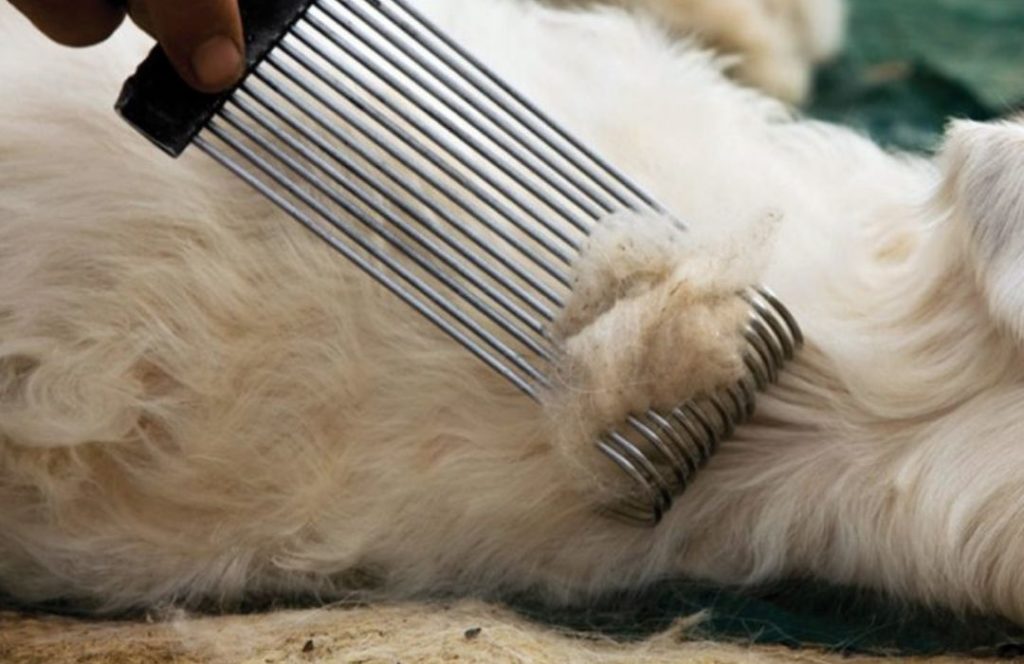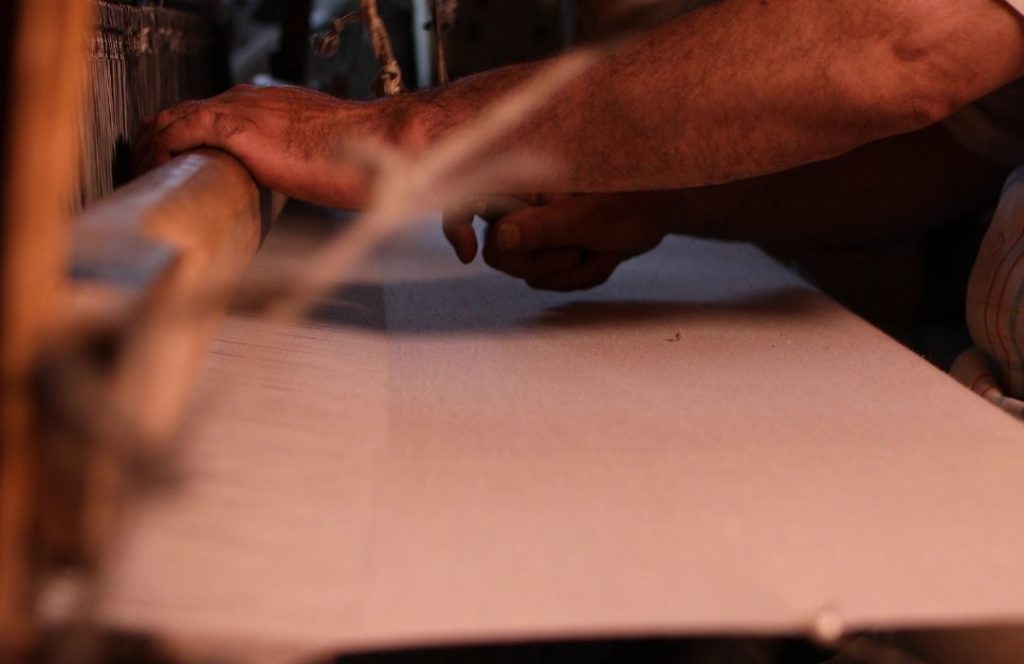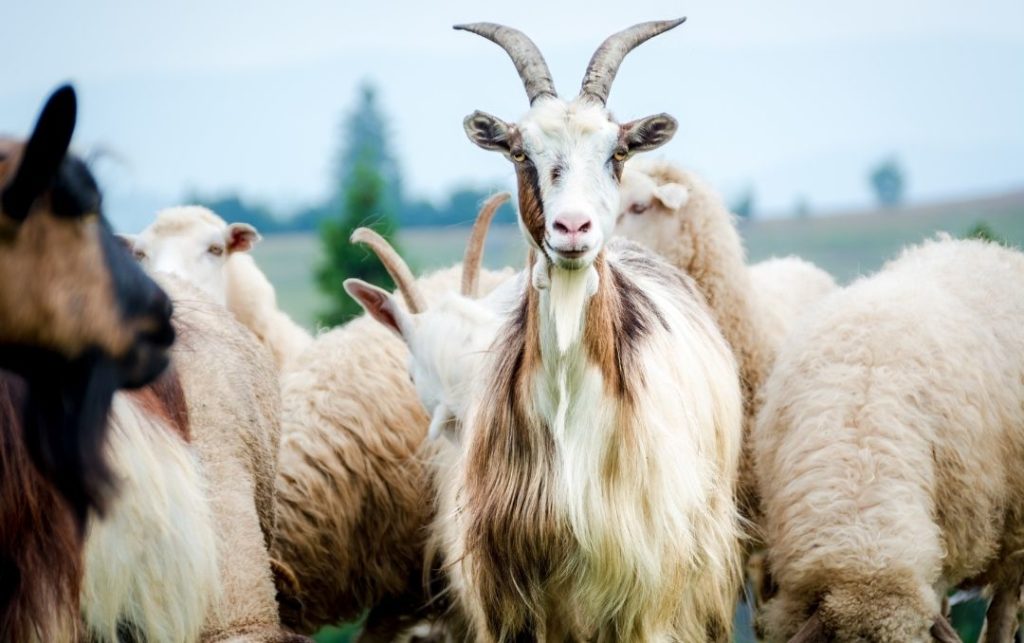You must have been into this question often, "What animal produces Cashmere?". There is beauty in defining the finest Cashmere. Changra Goats are a rare species of Goats that produce the finest Cashmere wool. These Goats develop Cashmere wool as a protective sheath around their body in harsh winters. As soon as the summer comes, they feel suffocated in the wool and rub it against trees and rocks. Therefore, herders also manually comb out the wool. That is what Cashmere wool is. It is procured from Goats of Changhthanghi.
There is no harm done to the animals because animal species are part of our ecology and should be preserved to every extent. Indeed, there are several breeds of goats present in the world that produce Cashmere wool but the finest is produced by Changhthanghi Goats or Changra goats. There is no animal cruelty in the process of procurement as well as crafting.
Where does Cashmere come from | Cashmere Animal - Changra Goats
To know the ethical status of Cashmere, a question is frequently asked; "where does Cashmere come from? or Cashmere comes from what animal? The Changhthanghi plateau is a high-altitude region. The minimum temperature is less than minus 20°C in winter. The rarest breed of goats called the Changra goats (Cashmere animal) dwells at the feet of the mountain Changhthanghi. In the harsh winters, the Changra goats meticulously develop a thick layer of wool on their bodies to overcome the cold. With the changing of seasons, the Changra goat goes through hormonal changes in its body, and shed off the thick wool by rubbing against rocks and trees. This comforts its body from the unbearable heat of summer.
Apart from the efforts of the goat itself, combing out extra fibre from the body of the goat is manually done by the Changpa; tribesmen who are the herders of the Changra goats. They manually comb the thick wool out. The wool is called Cashmere wool. This is packed in small pouches to be sent for processing

The procuring of Cashmere is in itself a process of ethical steps. It is a fact that herders indeed herd the Changra Goats to comb out the fine Cashmere wool. There is no use of a machine, or any cruel methods by which the animal can be exposed to torture or pain.
Beyond the fields of Ladakh, at the feet of Chanthanghi, there is an aroma of beauty and luxury in the form of Cashmere wool. The orchestra of luxurious Cashmere starts in Ladakh and proves to be its best version in Kashmir ahead.
Crafting in Pashmina
The fine Cashmere reaches Kashmir in small packets. Artisans applaud the arrival of the luxurious wool. The wool is cleaned thoroughly to get all the dirt and grime out.
After the process of cleaning, the next step is the process of Spinning. It begins by giving the local women Cashmere wool to spin fine yarn. Also, the womenfolk of the valley mainly spin Cashmere wool. The process is done on the wooden wheel/ charkha called yinder in the local language. Thus, the women artisans meticulously spin the fine wool to the miraculously fine Cashmere yarn.
Humming the songs of Kashmir folklore, the Wanvun (Humming of songs) enhances the process by adding an aura of Kashmir to each spun yarn.

From the destination of the Cashmere wool in the moment of Pashmina Art, each process is explicit. In the valley of Kashmir on the handloom preoccupied with the artisans of great valour and perception, the journey starts. The journey has been bestowed with the songs of harmony between Pashmina Art and the artisan. Looking below from the heaven of Art, Pashmina visibly portrays the description of every artisan and shines within their souls.
Weaving of Cashmere
Weaving is the next step in Pashmina Art. It is the process of crafting fine yarn into premium fabric. The highly skilled artisans work on the handlooms set up in the local workshops/ karkhanas. Also, the handlooms are mostly made of forest wood. The artisans primarily men artisans work meticulously on the fine yarn. By creating magical warps and wefts using their hands and feet, the fabric comes into existence. Therefore, the supremely premium fabric is turned to the further steps of designing.
The beauty of weaving is authentic as the karkhanas or workshops upheave the essence of Kashmir in each woven masterpiece. Sometimes, for Kani Pashmina, Patterned Pashmina and Reversible Pashmina, the designing starts in the weaving process itself. Suffusing the aroma of fine Cashmere with the Handicrafts of Kashmir is an avalanche in the beauty of Pashmina Art.
Designing in Pashmina Art
After the making of a fine Cashmere base, the crafting begins with the first step of dyeing. The
dyeing of Cashmere is done by a skilled dyer called Rangur in the local language. There is an array of colours with each shade and tone. The pigmentation is done according to the requirement. In the whole dyeing process, all the steps are done manually by the skilled people of the valley.
Moreover, further steps like patterning, printing, embroidering, weaving, and ornamentation are
done according to the designer's design. Henceforth all the processes from cleaning to the designing of Cashmere fibre are the Art of Pashmina. Therefore, the process of designing commences as soon as the faith of the finest Cashmere is adorned. The marvellous hands of artisans whirl in the designs and sing songs of art on the finest Cashmere. The surrounding aura of the valley signifies the profound design in diverse ways.
There are three main styles in Pashmina Art; Cashmere Wraps, Cashmere Scarves and Pashmina Shawls. It is to be noted that Pashmina Art is the crafting of the finest Ladakhi Cashmere to a diverse range of accessories in distinct designs.
The Pashmina Art is exclusive to the Valley of Kashmir. That's why there is always an aura of Kashmir valley in every masterpiece of Pashmina. Thus, the Art is rich in explicitness and luxury of the valley. The intricacy in each design is filled with the heritage of Kashmir. The masterpieces speak off the high skill and labour of artisans who work day and night to craft one beauty of Pashmina
History of Pashmina Art proves the ethicality of the Cashmere procuring
The origin began when a Persian saint was travelling across the globe. Mir Syed Ali Hamdani was a sage from Persia, Middle East. He brought several cultures and traditions to the Valley of Kashmir. Therefore, Mir Syed Ali Hamdani came to Kashmir with 700 craftsmen to adorn the beauty of the valley and to spread the holy message. He rested his feet in the region of Changhthanghi Ladakh. Thus, the saint landed its appearance on Changthangi Mountain in Ladakh. While perceiving nature, he locked his eyes on the Goat of marvelous wool. Awestruck with the softness and fineness of the wool, he made socks out of it and gifted them to the Sultan Zain-ul-Abideen of Kashmir Valley.
Perceiving the beauty of Cashmere wool, suggested making an industry that cultivates the Pashmina in desirable styles. Even the name Pashmina, derived from the Persian word, pashm, meaning "the soft gold" is exquisite in being. The history itself shows how the saint ethically combed out some of the wool from the rare species of goats. This is evident from the whole tale of Pashmina that there is always a ethicality in each step. The marvellous designs and styles were later crafted with the same serenity and bewitching glory of the Changhthanghi Cashmere through the eyes of Pashmina Art.
What animal is Cashmere procured from?

There are diverse breeds of Cashmere producing goats. Each breed has a specific percentage of production in the total production. The several breeds viz; Australian Cashmere Goat, Liaoning, Inner Mongolia, Xinjiang, Hexi, Zhonghwei, Tibetan Plateau, Luliang breeds, Changthanghi, etc. Therefore, all the breeds produce Cashmere wool that produces warmth. The exclusive breed of goats called Changra Goats is rare species of goats that produce wool.
In addition, these Goats produce fine wool once every year. Therefore, only around 80 to 170 gms of Ladakhi Cashmere are produced during a year. Therefore, considered the rarest. Also, other breeds of it produce several times more as there is almost 400 million Cashmere eliciting Goats all over the world. Consequently, the production caters to the manufacture of different styles like Pashmina Shawls, Scarves, and Wraps.
Also read: IS MOHAIR BETTER THAN CASHMERE?
Goats are not killed for Cashmere
For procuring the finest Cashmere, Pashmina.com ethically gets the wool from Ladakh. In Ladakh, the Goats are grazed efficiently and with utmost care. The herders of the Changpa tribe diligently comb out the excess wool from their bodies without harming the animal. The Changra Goats are of rare species but they are not harmed during the procurement process. Therefore, Cashmere is produced from the animal grazed in Changhthanghi. The Pashmina craft is a jubilant and skillful craft that precisely follows the normal to craft a masterpiece that is ethical as well as environmentally friendly.
It is evident from the procurement that herders bless the Changra goats by combing out the excess wool. In the summer season, the goats can get suffocated by the excess wool under their bellies, behind their ears and neck. Therefore, it is an ecological necessity to comb the excess wool out. The excess wool is thereupon used to revive a tradition of Kashmir and that adds to the conservation of culture. Overall, the process is colossal in the ways of revival and preservation. It is to be noted that Changra Goats are rare as they are found only in one area of the whole world. This implies that the procuring and crafting in Pashmina is ethical and legal according to all the legit rules.
Also read: WHICH COUNTRY HAS THE BEST CASHMERE IN THE WORLD?
Legacy of Pashmina Art
Procured from the Changra Goats of the Changhthanghi region, Cashmere wool is defined. Pashmina Art gave away to a place where it is celebrated with every one of its presence. The Cashmere wool grows on the Changthangi Goats in Ladakh in the winter season to protect the Goats from the severe season. The cosy Cashmere wool takes a breath in this season over the body of Changthangi Goats. Towards the spring, the Goats rub against the rocks to shed off the wool to let the warmth take off their bodies. Afterwards, transfer to the Kashmir Valley.
Kashmir Valley is a place for authentic Pashmina Art as the process is itself a natural process. Kashmir dignifies nature by being a revere to the supplication of mountains and rivers. Generations of artisans have worked and meditated on the craft of Pashmina. They have witnessed its downfall due to the technological upheaval around them. It led to the usage of power looms and machine spun, and machine-made Pashmina became a menace to the Original Pashmina Craft.
Pashmina.com serves the endless Collection of Ethical Pashmina
We, at Pashmina.com, bestow the world with authentic and pure Pashmina Accessories. The journey begins in Ladakh, at the feet of Changhthanghi and is enhanced by its presence of luxury. The journey never ends because the opulence of Pashmina is never-ending. The beauty of each Cashmere Scarf, Cashmere Wrap or Pashmina Shawl is evident from the masterpieces of each style. The designs are intricate, opulent and filled with luxury. Each design is serene. Kashmir and its heritage are defined in each style and every design. All the steps from procuring to crafting are ethical and the sustainability of each step is up to the mark.
Environment and Ecology are the embodiment of our platform. It is necessary to preserve and upheave the concepts of ethicality and Sustainability to make the world a better place to live for every living being. Pashmina is the name that reminds us of nature and purity, therefore the essence of its purity needs to be conserved. With conservation, there is a need for the revival of pure Pashmina. We, confer to the revival as well as the perseverance of Pashmina accessories including all the styles and designs.